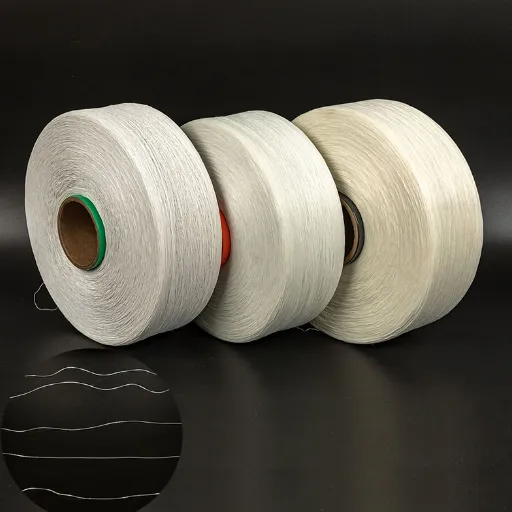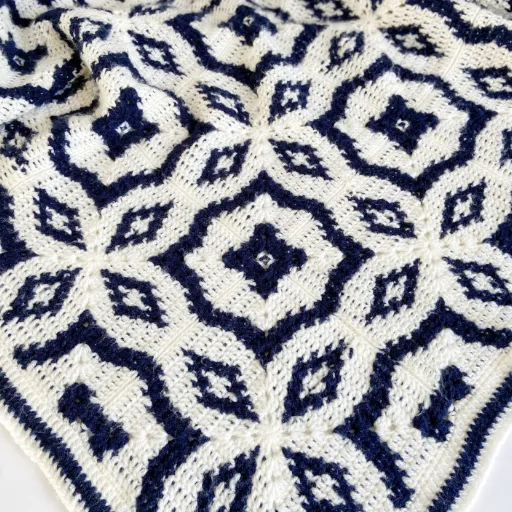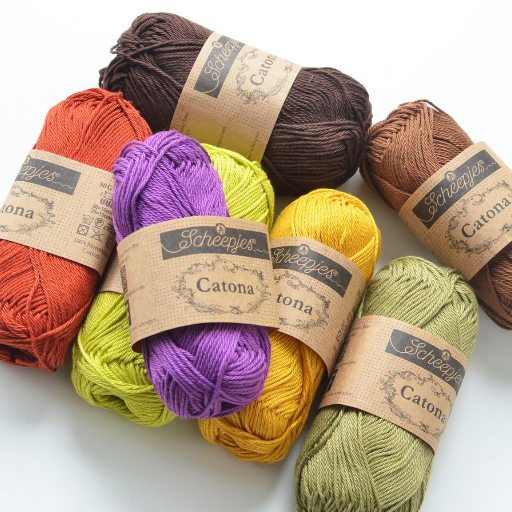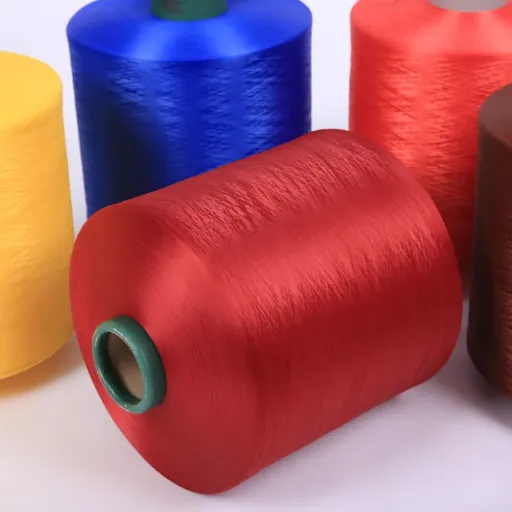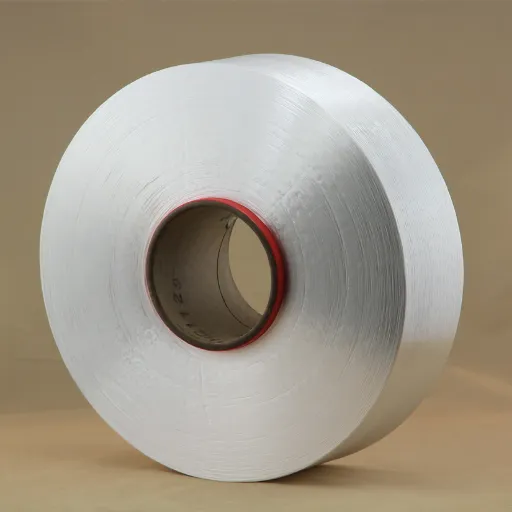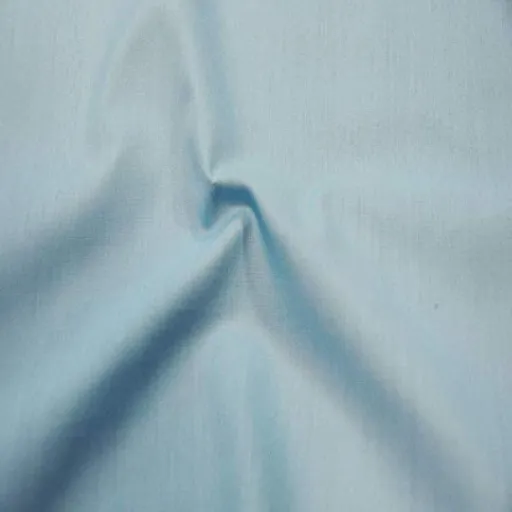The acrylic fabric has gained considerable popularity in the textile industry due to its multiple uses and practicality. Besides being soft and warm, acrylic is also a perfect blend of qualities that make it a go-to material for many different sectors. But what makes this synthetic material so special? What is its performance like in terms of strength, comfort, and elasticity? And what are the main applications? This piece provides a thorough investigation of acrylic fabrics, examining all aspects from their composition and significant attributes to the numerous ways they enhance today’s products. If you’re wondering why acrylic is widely used or how it can meet your particular needs, then look no further.
Introduction to Acrylic Fabric
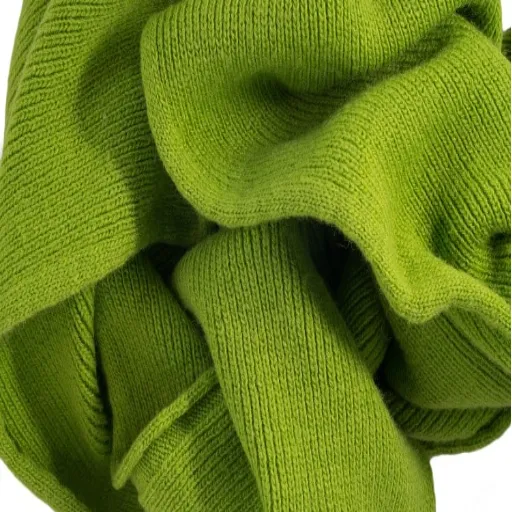
Acrylic fabric belongs to the group of synthetic materials that are produced from acrylic fibers, and the main ingredient in the fibers is a polymer called polyacrylonitrile. Among other things, the fabric is very durable, lightweight, and resistant to environmental factors like sunlight and moisture. Due to its soft texture and excellent insulating properties, acrylic is frequently marketed as a cheaper substitute for wool. Some of the primary uses include the manufacturing of clothing, upholstery, outdoor furniture, and blankets. These are just a few examples of the versatility and ease of maintenance that have contributed to acrylic being the material of choice for many products.
Types of Acrylic Yarn
Acrylic yarn is available in a multitude of types, each one specific to different instructions and tastes. The most frequently used ones are:
- Basic Acrylic Yarn – This is the primary acrylic yarn, which is inexpensive, comes in a wide range of colors, and is suitable for projects like scarves or blankets that are suitable for beginners.
- Blended Acrylic Yarn – Natural fibers, such as wool or cotton, are the traditional partners of acrylic yarns, providing the qualities of softness, breathability, and durability that are ideal for garments like sweaters and shawls.
- Anti-Pill Acrylic Yarn – This yarn is designed to resist pilling, maintaining its smoothness even after repeated use or washing, keeping your projects looking new for longer.
- Chunky Acrylic Yarn – The thick strands of this yarn make it perfect for warm and quick-to-knit projects like winter hats, oversized sweaters, and cozy blankets.
- Variegated Acrylic Yarn – In this type, multiple colors are mixed into a single strand, creating one-of-a-kind, multicolored patterns in the finished projects without the need to switch yarns.
Composition and Characteristics
Acrylic yarn is a synthetic fiber that consists of long polymers spun into threads. The most widely used polymer is polyacrylonitrile, which comes from petroleum-based chemicals. These threads are produced to imitate the tactile qualities of natural fibers, such as wool, while also being cheaper, longer-lasting, and resistant to insects and mold. Contemporary acrylic yarns are frequently subjected to technological innovations in the production process, resulting in softer textures and brighter colors. They are also lightweight, machine washable, and easily retain their shape, which is why they are used for various kinds of knitting and crochet projects.
Properties of Acrylic Fabric
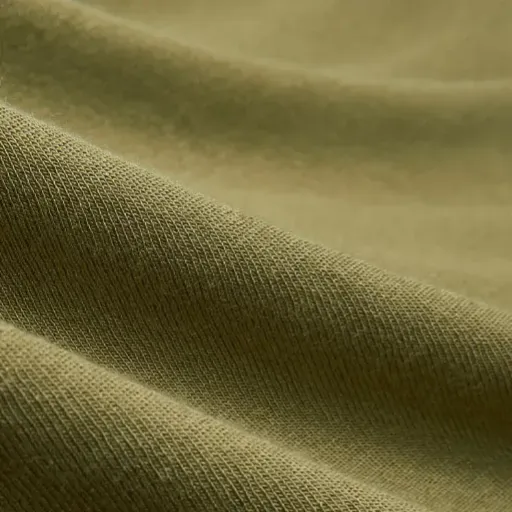
- Softness: Acrylic fabric can be manufactured to feel soft and cozy, often resembling the texture of natural fibers like wool.
- Lightweight: It is light and easy to handle, making it comfortable for everyday use.
- Durability: Acrylic fabric is resistant to wear and tear, maintaining its integrity over time.
- Moisture Resistance: It resists mildew and does not absorb water easily, making it suitable for various environmental conditions.
- Color Retention: Acrylic fabric retains vibrant colors without fading, even after frequent washing.
- Ease of Care: It is machine washable and requires minimal care, making it convenient for busy lifestyles.
- Affordable: Acrylic is a cost-effective alternative to many natural fibers, offering a budget-friendly option.
Elasticity and Stretch
Acrylic material has good elasticity that helps it resist deformation even after heavy use and washing. It is not as soft and springy as spandex, but it is still a suitable material for blending with others to achieve flexibility, durability, and comfort. This trait is one of the reasons acrylic fabric remains on everyone’s mind when it comes to buying sweaters, sports gear, and upholstery—offering comfort and durability simultaneously.
Durability of Acrylic Materials
Acrylic materials are robust and can be used practically everywhere. Their resistance to the sun, water, and mold is one of the primary characteristics that assures their long life. Due to its synthetic origin, acrylic does not undergo UV degradation, making it suitable for outdoor applications such as outdoor furniture covers or sunshades. On the other hand, it is less prone to shrinking and wrinkling, thereby prolonging its aesthetic and functional life. Proper care and maintenance will not only extend the lifespan of acrylic materials but also ensure good performance in various sectors.
Comparison with Other Textiles
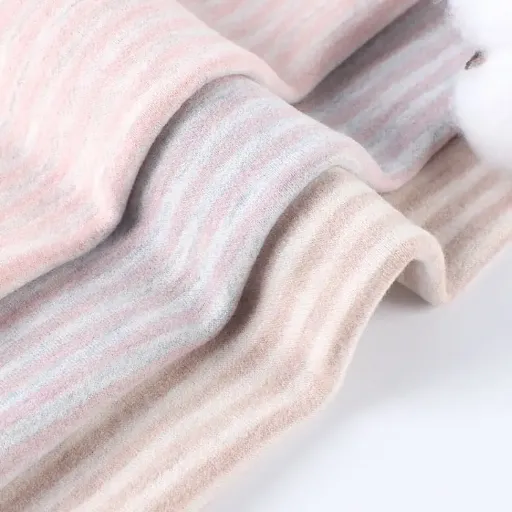
Acrylic fabrics are superior to natural and synthetic textiles in many aspects. For instance, cotton and wool are poor choices for outdoor use due to their susceptibility to moisture, mold, and mildew; however, acrylic is very durable. In addition to all that, acrylic can be purchased at a lower price than wool, although it is lighter and tends to shrink more when washed with water. Additionally, polyester also possesses some of the same weather-resistant qualities as acrylic; however, the latter’s UV resistance is far superior. Consequently, the longer the exposure to the sun, the more pronounced the fading of the color and the deterioration of the fabric’s integrity. All these aspects make the fabric not only durable and cost-effective but also resilient, making it a competitive choice for a range of applications.
Acrylic vs. Natural Fibers
Here’s a concise comparison table based on the latest information and insights:
| Parameter | Acrylic | Natural Fibers (e.g., Wool, Cotton) |
|---|---|---|
| Elasticity | Moderate stretch, less than wool | High elasticity (e.g., wool) |
| Durability | Resistant to weather and wear | Varies; wool is durable, cotton less so |
| Softness | Soft but synthetic feel | Naturally soft and comfortable |
| Moisture Absorption | Low; dries quickly | High; absorbs moisture well |
| Maintenance | Easy to clean, resists shrinking | Requires care; wool shrinks, cotton wrinkles |
| Cost | Affordable and budget-friendly | Generally more expensive |
| Sustainability | Synthetic, less eco-friendly | Natural, biodegradable |
| Applications | Sweaters, gloves, upholstery | Clothing, bedding, and home textiles |
| Weather Resistance | Excellent; resists UV and moisture | Wool insulates; cotton absorbs water |
| Stretchability | Moderate; enhanced with blends | Wool stretches well; cotton does not |
Acrylic vs. Other Synthetic Fibers
Here’s a concise comparison table based on the latest information and insights:
| Parameter | Acrylic | Other Synthetic Fibers (e.g., Polyester, Nylon) |
|---|---|---|
| Elasticity | Moderate stretch, less than spandex | Varies; nylon and spandex are highly elastic |
| Durability | Weather-resistant, moderate durability | Highly durable, especially nylon |
| Softness | Soft but synthetic feel | Varies; polyester is less soft |
| Moisture Absorption | Low; dries quickly | Very low; excellent moisture resistance |
| Maintenance | Easy to clean, resists shrinking | Easy care, wrinkle-resistant |
| Cost | Affordable and budget-friendly | Generally affordable, varies by type |
| Sustainability | Synthetic, less eco-friendly | Synthetic, but recycled options are available |
| Applications | Sweaters, gloves, upholstery | Sportswear, outdoor gear, and industrial uses |
| Weather Resistance | Excellent; resists UV and moisture | Excellent; nylon is highly weather-resistant |
| Stretchability | Moderate; enhanced with blends | High with spandex or elastane blends |
Practical Applications of Acrylic
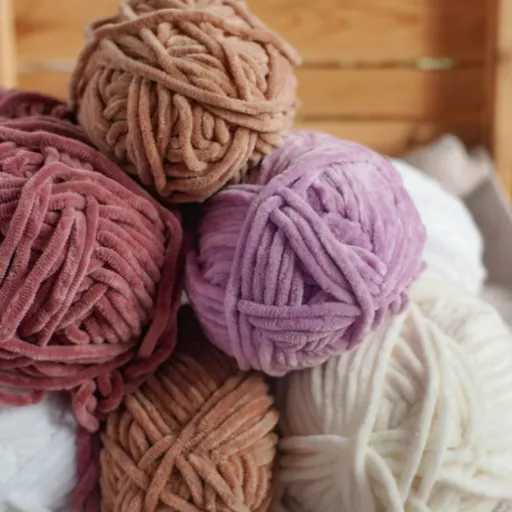
One of the most significant factors behind the widespread use of acrylic is its versatility and durability. It is a standard material in fashion, with sweaters, scarves, and gloves being the main clothing items made of it. Similarly, it enjoys massive popularity in home decor, where it is used for upholstery, carpets, and curtains. The industrial uses of acrylic in paints, coatings, and adhesives continue to be augmented by its weather resistance and color retention properties. Moreover, the same features make it a preferred material for the manufacturing of outdoor canopies, tents, and marine fabrics.
Uses of Acrylic Fabric in Fashion
Acrylic fabric has emerged as one of the most popular materials in the fashion industry due to its affordability, versatility, and similarity in texture to wool. Among its frequent uses is the production of elegant and lightweight sweaters and cardigans that resemble natural wool in warmth and softness but at a much lower price. A scarf, hat, and glove are some of the accessories that are often made from acrylic due to its insulating properties. Its capacity to hold bright colors so well has made it a favored fabric for producing outerwear and sportswear with attractive, daring designs. Acrylic is nevertheless gaining acceptance as a designer material due to modern technology. As a result, designers are continually discovering new ways to utilize it as a stylish and practical fabric for garments.
Manufacturing Applications of Acrylic
The manufacturing sector has a strong preference for acrylic fabric that is versatile, durable, and cost-friendly. Due to its soft texture, thermal insulation, and durability, it is widely used in the home furnishings sector for making upholstery, blankets, and rugs. Acrylic fabric is used to create outdoor and industrial products such as awnings, tarps, and boat covers due to its excellent weather resistance and color retention features. Additionally, its lightweight nature and versatility make it a great candidate for producing performance-oriented activewear, uniforms, and protective clothing. The journey of acrylic fabric to become a futuristic material for industrial and consumer use continues with breakthrough innovations tailored to meet needs through continuous progress in materials science.
Benefits and Limitations of Acrylic Fabric
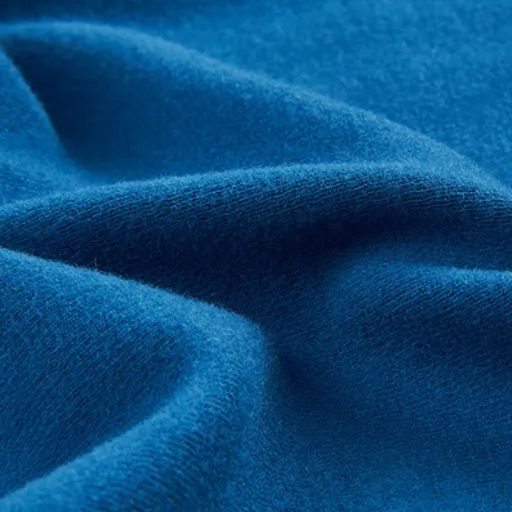
The acrylic fabric is a king among fabrics: it is both light and durable, making it suitable for various uses, such as outdoor furniture and sportswear. It has many crucial characteristics, such as being fade-resistant, moisture-resistant, and mildew-resistant, making it an excellent choice for harsh environments. Acrylic fabrics have limitations, such as the likelihood of pilling over time and not being as breathable as natural fibers, which may affect comfort. Also, the chemical methods used in the production of acrylic fabrics could be a downside in terms of environmental sustainability.
Advantages of Using Acrylic
Acrylic textile has been in the spotlight due to its numerous advantages, making it a versatile material for various applications. The fabric’s excellent durability and environmental resistance to ultraviolet light, moisture, and mildew, among others, ensure its performance lasts outdoors. The fabric is both lightweight and warm, replicating the softness of natural wool, and is therefore suitable for both clothing and blankets. Moreover, acrylic is very colorfast, meaning it absorbs dye well and does not fade quickly, thus maintaining its lively look for a longer time. The low production cost of the fabric is an additional factor that makes it a good option for both the supplier and the buyer. With technology advancements, acrylic fabrics are becoming more refined, less breathable, and less harmful to the environment than before; still, they are using innovative processes aimed at improving sustainability.
Drawbacks of Acrylic Materials
Although acrylic fabric has many advantages, it also has some drawbacks that cannot be ignored. Environmental impact is a significant concern. Acrylic’s synthetic nature means it is made from chemicals derived from petroleum, which makes the entire process lengthy, energy-intensive, and polluting. Moreover, acrylic fibers are non-degradable, meaning they persist in the environment for an extended period and thus contribute to the problem of microplastic pollution in water bodies. Among its disadvantages, the lack of breathability is the most serious faced by the user. This characteristic makes the fabric less comfortable for extended wear during the hot and humid seasons. In addition, although acrylic is fading resistant, it still tends to shed in tiny fibers (pilling), which may ultimately affect the overall look and quality of the fabric. These deficiencies highlight the need for ongoing progress to make acrylic fabrics more environmentally friendly and beneficial.
Care and Storage
When it comes to maintaining acrylic fabrics, I treat them gently by washing them in cold or lukewarm water with a mild detergent that helps preserve their texture and color. I do not use high heat and prefer either air drying or low temperatures when machine drying is unavoidable. For storage, I ensure the fabric is clean and completely dry, then fold it neatly and place it in a cool, dry area away from sunlight to prevent damage or fading.
Reference Sources
The following are five sources that are considered professional and authoritative references, which you can use to check your article’s correctness regarding “Is acrylic material stretchy?”
- Study of the surface hardness and modulus of elasticity of conventional and microwave-cured acrylic resins
Through this exploration, the authors present a detailed study of the elasticity and modulus of acrylic resins, thus revealing their material properties. - Elastic modulus and flexural strength comparisons of high-impact and traditional denture base acrylic resins
This offers a comprehensive and detailed comparison of the elastic modulus and flexural strength of various types of acrylic materials. - Elasticity studies on leather retanned with various types of acrylic polymers
The present work is devoted to discussing the elasticity of materials treated with acrylic polymers and furnishes relevant data on the subject. - Mechanical properties of acrylic-based latex blend coatings
This review examines the mechanical properties of acrylic-based materials, with elasticity being one of the properties investigated. - An experimental study of some comfort-related properties of cotton—acrylic knitted fabrics
The research in question looks into the combination of cotton and acrylic in terms of comfort and elasticity.
Frequently Asked Questions (FAQs)
Is acrylic material stretchy?
Acrylic material is known for its stretch and recovery properties. While it is not as stretchy as materials like spandex, acrylic can provide some flexibility, making it comfortable for various clothing items such as sweaters and activewear.
How does washing acrylic affect its stretchiness?
Washing acrylic in warm water may cause some shrinkage, but it is generally designed to return to its original shape after washing. To care for acrylic properly, it is best to wash them in cold water and use a gentle cycle to minimize any potential stretch loss.
Can I dry acrylic clothing in the dryer?
It is advisable to avoid using a dryer on high heat for acrylic garments. Instead, opt for low heat settings or air drying flat, as this helps maintain the fabric’s shape and prevents shrinkage.
What are the benefits of acrylic as a fabric?
Acrylic is a synthetic fiber that offers several benefits, including being lightweight, hypoallergenic, and easy to care for. It is also popular for its warmth and moisture-wicking properties, making it an excellent alternative to wool without the itchiness.
How do acrylic clothes compare to those made from natural fibers like cotton or wool?
Acrylic clothes are often used as a more affordable and lightweight alternative to garments made from natural fibers, such as cotton or wool. They provide similar warmth while being easier to care for and often more resistant to shrinkage.
Can I knit or crochet with acrylic yarn?
Yes, acrylic yarn is a popular choice for knitting and crocheting due to its elasticity, affordability, and wide range of colors. It is easy to work with and tends to hold its shape well after being washed.
Will cotton acrylic blends stretch more than pure acrylic?
Cotton acrylic blends can provide a different stretch experience. The presence of cotton may enhance the fabric’s breathability and comfort, while maintaining some of the elasticity typical of acrylic. This blend can offer a good balance of softness and stretch.
How can I ensure my acrylic garments last longer?
To ensure the longevity of your acrylic garments, wash them in cold water, use a gentle cycle, and avoid high heat in the dryer. Additionally, laying them flat to dry can help maintain their size and shape, preserving their appearance and texture for a more extended period.
What should I do if my acrylic sweater shrinks?
If your acrylic sweater shrinks, you can try gently stretching it back to its original shape while it is damp. However, be cautious, as excessive pulling may damage the fibers. It’s best to prevent shrinkage by following proper washing and drying instructions from the start.









